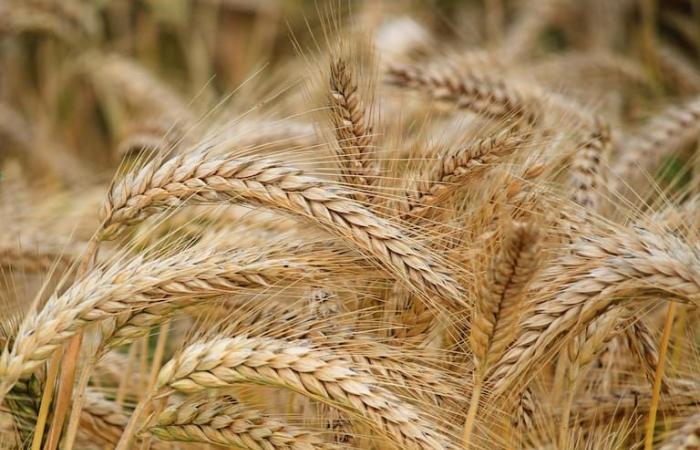Hear
Gone is the bullish rally in May driven by the adverse environmental conditions that affected Russian crops and caused private companies to recalculate their estimates. Now wheat is in a bearish sequence that on Friday added the third negative week in a row in the US market and that today added one more wheel with the slates in red. The reasons for the sudden change in trend are the accelerated pace of the harvest of winter varieties in the United States and the favorable prospects for the outcome of the campaign in that country.
With those fundamentals putting pressure, The July position of wheat in Chicago and Kansas fell today by US$3.51 and 1.76, going from 217.34 to 213.83 and from 222.48 to 220.72 dollars per ton. Since the closing of last Tuesday, May 28, a wheel that marked the end of the price bonanza, the aforementioned contract lost 16.9 and 17.8% of its value, from 257.27 and 268.66 dollars then in force, respectively.
During much of the US winter wheat crop cyclewhich are the ones that provide almost 70% of the total supply of fine grain, The plants showed a good general condition. This was ratified last Wednesday by the United States Department of Agriculture (USDA, for its acronym in English), that in its monthly agricultural estimates report raised its calculation of the 2024/2025 production volume from 50.56 to 51.02 million tonsagainst the 49.31 million of the previous campaign.
And yesterday, with its weekly crop report, the organization itself added bearish fuel to the market by reporting the progress of the winter wheat harvest on 27% of the suitable area, compared to 12% from the previous week; 13% at the same time in 2013; to the 14% average of the five preceding campaigns, and the 22% expected on average by private companies. According to the organization, in Kansas, which is the main producer, 28% of wheat has already been raised, compared to 6% last year for the same date. Regarding the condition of the plants, the proportion in good/excellent condition increased from 47 to 49%, compared to 38% in 2023 and the 46% estimated by operators.
From the agronomic The USDA also left good news for spring wheat, which, with the recently completed planting, reflects a very good condition. In fact, the organization raised the proportion of plants in good/excellent condition from 72 to 76%, a figure that was far from the 51% in force a year ago and which contrasted with the 71% predicted by private companies.
To the bearish conjunctural effect of the US harvest, the market added the lack of news on the possibility that India will have to import wheat and the improvement in environmental conditions in Australiawhere there was concern about the lack of humidity in some of the country’s producing states that, together with Argentina, enter new grain into the commercial circuit towards the end of the year.
Furthermore, even with the cuts made by the private sector, The start of the harvest in key supply countries, such as Russia and Ukraine, also began to put pressure on the market.whose 2024/2025 business cycle formally begins on July 1. In the first of them, the returns are turning out to be better than expected. after the drought and late frosts, but specialists warn that the initial results can be misleading, so we will have to wait for more representative data at the country level.
It should be taken into account that Last Wednesday the USDA reduced its estimate of wheat production in Russia from 88 to 83 million tons and its export estimate from 52 to 48 million. As for Ukraine, the organization adjusted its harvest and sales projections from 21 to 19.50 and from 14 to 13 million tons, respectively.
The Argentine wheat market also seems to have left the upward trend behind which last month encouraged many producers to include the cereal in their planting program. The Matba Rofex boards today reflected drops of US$2 and 1 on the July and December contracts, whose adjustments were 250 and 226 dollars per ton. Since the closing of last May 28, these contracts lost 10.2 and 10.7% in comparison with the 278.50 and 253 dollars in force then.
In these failures, the external tone has been as relevant as the good domestic prospects, especially after Last Wednesday, the Rosario Stock Exchange projected the intention to plant 2024/2025 wheat at 6.9 million hectares which, according to its own calculations, would imply an increase between campaigns of 25.5%against 5.5 million in the 2023/2024 cycle.
“With the level of technology that would be applied this year and if the weather does not play against the crop, the wheat harvest could exceed 21 million tons. If it materializes, it would constitute the second most important harvest in the history of cereal,” said the entity, in reference to the record of 23 million tons collected in the 2021/2022 campaign.


